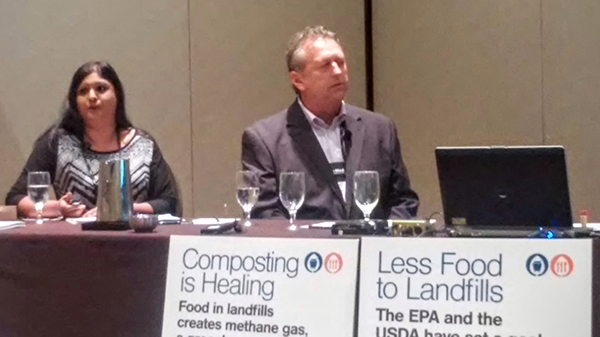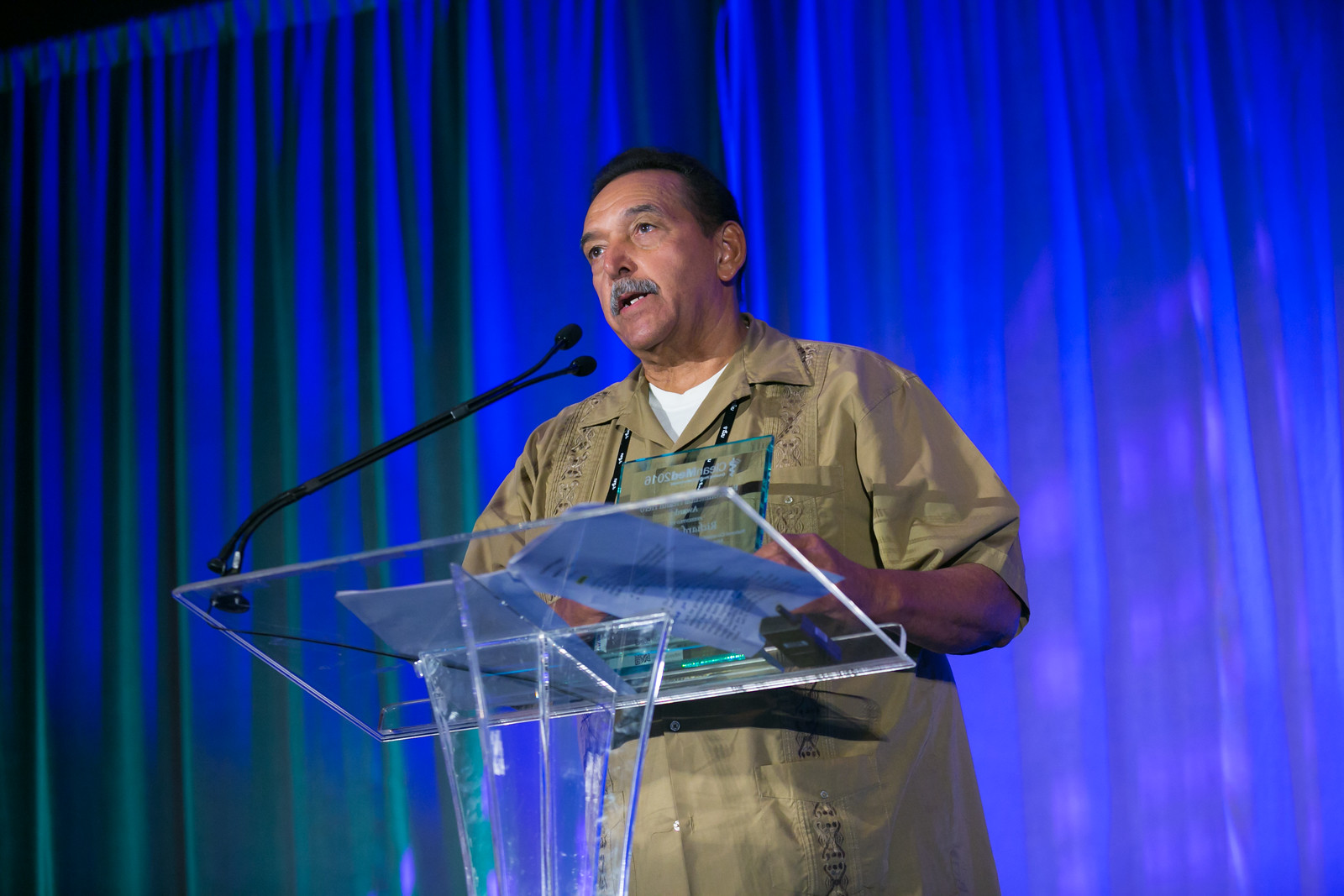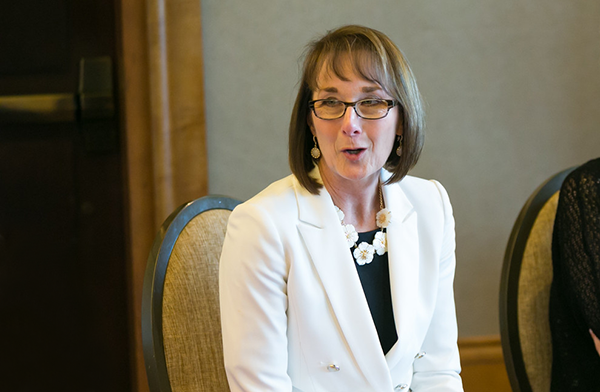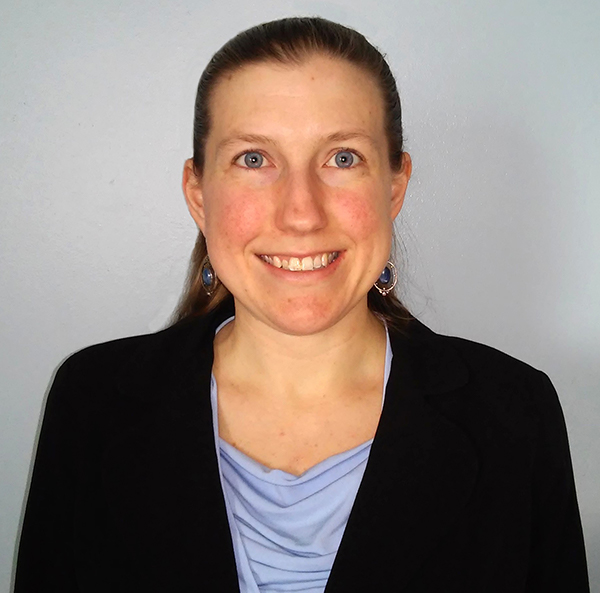“We’re Doing This for the Community”: Three Perspectives on the Role of Community in Healthy Food
There is widespread consensus in the healthcare community that access to healthy, nutritious food is an inherent part of preventative care. Messages about food, its role in preventing disease, farm to institution partnerships, procuring sustainably raised food products, reducing food waste, environmental nutrition, and addressing food insecurity in vulnerable communities resonated at CleanMed and beyond in the larger conversation.
Taken from CleanMed, these three experts provide their perspective on the relationship between healthy food and the communities we live in, work in, and care for.
“We’re doing this for the community. We are doing this for the caregivers”
 So says Michael Geller, the Sustainability Manager at Providence Health and Services as he and his colleague Kas Logan, Senior Manager of Culinary Operations “talked trash” and how to avoid it at the Feed People Not Landfills – Make Less Food Waste session.
So says Michael Geller, the Sustainability Manager at Providence Health and Services as he and his colleague Kas Logan, Senior Manager of Culinary Operations “talked trash” and how to avoid it at the Feed People Not Landfills – Make Less Food Waste session.
Thirty to forty percent of all food is wasted in the United States, Geller reminded us at the beginning of their presentation. And for Providence Health, food waste and the resultant pollution was contrary to the mission developed by the sisters who founded the health institution in 1856: “We strive to care wisely for our people, our resources and our earth.”
These two experts in reducing food waste in health care advise using “computations, creativity, and communication” to tackle waste reduction. Start by calculating just how much waste you currently produce, they recommend. They described how an afternoon of digging through the trash and taking photos in 2008 led to the discovery that 24% of all their waste was comprised of food and fibers.
Providence started collecting and composting food waste and hasn’t looked back since. And in 2014 when they signed the Healthy Food in Health Care Pledge, they started to focus in on prevention, which led to the top notch computer system they employ today. Each aspect of food service is analyzed for possible waste reduction opportunities, such as purchasing less to begin with, proper portion sizes and recipe scaling appropriate to the number of people being served.
Creativity, as Logan describes it, is finding solutions for waste reduction such as using the tomato trimmings to make sauces and soups, or using proteins not used in recipes in salad bars, or changing the shape of their serving pans from rectangle to oval to promote smaller batches.
Communication both between staff and leadership and between the facility and those they serve is critical. One of the greatest strengths Providence has had is the support from both the senior leadership and the nutrition services teams. From “production huddles” (recipe learning sessions for staff) to clear instructional signs above bins, everyone in the facility is aware and supportive of their role in the shared goal of reducing food waste.
Learn more about food waste and how to prevent it through Practice Greenhealth’s Webinar series: Feed People, Not Landfills A Five-Part Series in Food Waste Assessment and Planning, Prevention, Donation and Management
“Never forget where we come from, those who make it possible for us to be here today, and always give back to those who give to us”
 To Richard Moore, recipient of Health Care Without Harm’s 2016 Environmental Hero Award, this comes down to protecting the safety, health and wellbeing of his community, and in particular their access to healthy, nutritious food.
To Richard Moore, recipient of Health Care Without Harm’s 2016 Environmental Hero Award, this comes down to protecting the safety, health and wellbeing of his community, and in particular their access to healthy, nutritious food.
Access to food is not always a given for many of the people who live in the South Valley of Albuquerque, New Mexico—never mind access to fresh, organic, nutritious produce. But Moore, a community organizer with more than 50 years of experience in activism, advocacy, and environmental justice believes that good food should be affordable for everyone.
Moore is the director of Los Jardines Institute. “Jardines” means gardens in Spanish, and it is the agriculture program that is at the root of the institute's healing mission. Operating out of urban farms and gardens, Los Jardines has developed a very different kind of community supported agriculture. Instead of investing money, members of Los Jardines invest time. In exchange for two hours of volunteering per week, they receive a share of the harvest. Over 50% of the vegetables grown in the gardens go directly to community member volunteers, which comprise 25-100 people per month. These people, who often face economic challenges, and would have difficulty affording organic foods, are given first pick of the spinach, kale, lettuce, peas, carrots, cilantro and other vegetables grown on the farms.
Another portion of the harvest is sold sliding scale at a farm stand, another is sold on contract to the public schools and the rest is sold at market value at farmers markets and to restaurants.
“[At the farmers markets] We sell our lettuce at market value, at $8 per lb. A lot of the folks in the community aren’t going to be able buy the lettuce at $8 per lb.,” Moore says, “Our goal is to put healthy, organic food back in the hands of the community.”
“70% of your health is based on your zip code, not your DNA code. If we invest in zip code we will have a much better health outcome”
 “What kind of health facility releases 10,000 ladybugs each month, has built the largest urban garden under glass to grow lettuce and other greens, has created an afterschool program to help at-risk youth graduate, invested 1.5 million of its own money to build programs that educate people to learn health work skills such as phlebotomy and lab work, and a cooperative laundry that serves the hospital and employs community members?” asks Heidi Gartland, Vice President of Government and Community Relations at University Hospitals in Ohio.
“What kind of health facility releases 10,000 ladybugs each month, has built the largest urban garden under glass to grow lettuce and other greens, has created an afterschool program to help at-risk youth graduate, invested 1.5 million of its own money to build programs that educate people to learn health work skills such as phlebotomy and lab work, and a cooperative laundry that serves the hospital and employs community members?” asks Heidi Gartland, Vice President of Government and Community Relations at University Hospitals in Ohio.
University Hospitals are leaders in healthy, sustainable food. Twenty percent of their meat is produced without routine antibiotics and more than 8% of their food budget is spent on local food. The hospital’s chef even raise his own chickens and several of the campuses host farmers markets. But as Gartland describes it, food is just one portion of what UH does for its community.
In her portion of the All In For Mission: Health Care’s Role In Healing Communities session, Gartland asked her listeners to imagine a very different kind of hospital, one that not only served its community but helped improve it through strategic investment.
Her message echoed the most resounding message of CleanMed—the thread that connected all of the sessions—and what will be the driver of action in the coming days, months and years following this year’s conference: the recognition that not only is the health of a community affected by social and environmental factors, it is the responsibility and vocation of health care to address these root causes of disease and disadvantage. It is is as Gartland put it, time to put aside “sickcare” for a holistic approach to wellness.
The next step in the conversation is determining just how to accomplish this goal and how to measure the effectiveness of health interventions to best utilize available resources, make strategic investments, and address the causes of disease and poor health head-on at the source. As was demonstrated by this year’s sessions, from leveraging community benefits to the “total health” and wellness approach recently announced by Kaiser Permanente, and many other innovative strategies that are being cultivated in communities all over the country, the potential for healthcare facilities to take on the role of “anchors for resilient communities” is boundless.
 April Galarza is the communications coordinator of Health Care Without Harm's Healthy Food in Health Care program.
April Galarza is the communications coordinator of Health Care Without Harm's Healthy Food in Health Care program.
